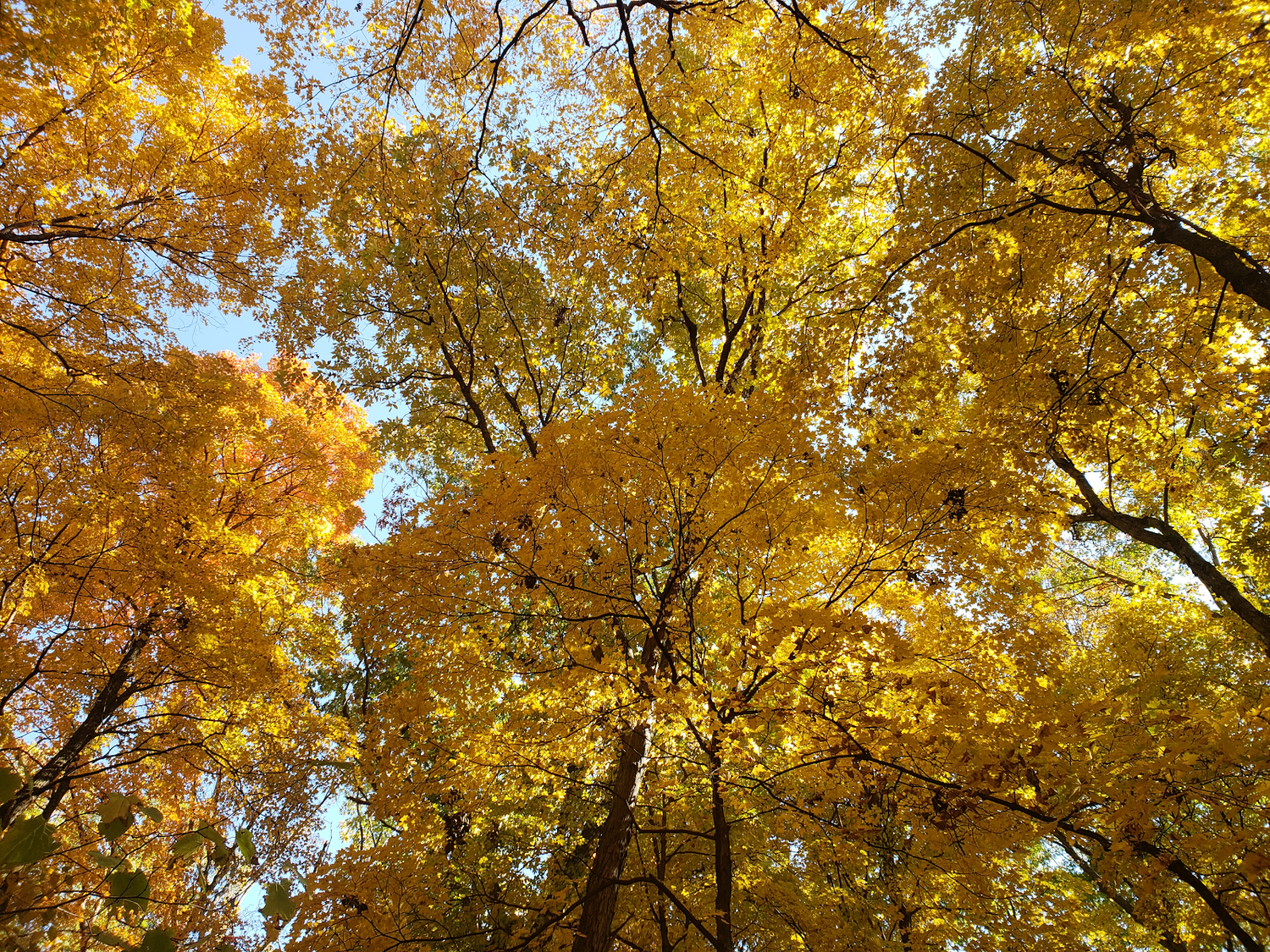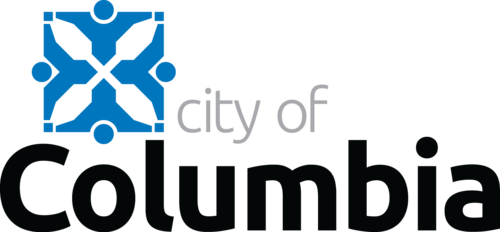
Natural Resources
Trees and greenspaces cool our city, support wildlife, improve water and air quality, and provide recreational opportunities to our community.
The Climate Action and Adaptation Plan (CAAP) identifies three natural resource goals:
- Increase climate resilience and carbon sequestration potential of public and private lands.
- Reduce per capita water usage.
- Reduce negative impacts from stormwater runoff and flooding.
Natural Resources
Be Part of the Solution!
Columbia has a wealth of natural resources that help keep our air and water clean and provide recreational benefits.
Urban Tree Canopy
CoMo Canopy
In 2025 the Office of Sustainability piloted a brand-new tree planting program — CoMo Canopy — and we’re thrilled to share how it’s growing!
Our mission? To help regrow Columbia’s tree canopy and bring the social, environmental, and economic benefits of trees to our community.
Year One Highlights:
- 349 trees planted across Columbia
- The majority are planted in neighborhoods with the least tree coverage
- 50 trees planted with nonprofits and community organizations
Trees strengthen neighborhoods, improve air quality, reduce heat, support wildlife, and even boost property values — and this program is growing right along with the trees we planted!
Stay tuned for stories from the field and updates on how YOU can get involved in expanding the CoMo Canopy.
Follow Our Progress Here.
Huge thank you to our amazing partners!
- Forest ReLeaf (150 trees donated!)
- Missouri Conservation Corps
- Salvation Army Harbor House (Fall Tree Distribution host)
Land Management
Arbor Day in Action!
On Arbor Day 2025, our community came together to celebrate trees and give back to the environment.
We kicked off the weekend with our incredible volunteers sorting hundreds of tree seedlings at the Columbia Parks and Recreation building. On Saturday, the celebration continued at the Columbia Farmers Market with a lively morning tree giveaway. By the afternoon, we joined forces with the Missouri Conservation Corps and the City of Columbia, MO, Office of Sustainability for the Ridgeway Neighborhood Tree Giveaway at Garth and Sexton.
Together, we planted seeds of change. One tree at a time.
Green Infrastructure
Adaption Measures in Action!
In 2016, Columbia’s Stormwater Utility, Columbia Parks and Recreation, and the Downtown CID teamed up to undertake the Really Big Tree Project.
A simple yet powerful way to transform our towns and cities: Plant lots of trees!
Here’s why they’re so essential for urban life:
• Stores carbon dioxide for a healthier atmosphere
• Reduces city pollution and improves air quality
• Helps protect from flooding by absorbing rainwater
• Reduces city temperatures, keeping us cool in the heat
• Provides habitats for urban wildlife, boosting biodiversity
• Beautifies urban surroundings, making our cities more vibrant and welcoming
The goal of this project was to create a multifunctional planting bed on the corner of 10th and Broadway, which would filter and control stormwater runoff and create a high soil volume planting bed that could support the growth of a large tree.
Learn about the value and importance of street trees as you walk through downtown.
Pictured: Corner of 10th and Broadway / Downtown, Columbia, MO
Land Management
Adaption Measures in Action!
Natural Resources City Employee CAAP Team, comprises city staff from across the organization. This team has made significant contributions to the improving quality of the City of Columbia’s natural areas and natural resource management. The team works collaboratively across departments from Finance to Utilities to Parks and Recreation.
Some highlights of their work include:
• Forum Blvd. capital improvement project: Good Stewards team members provided valuable advice to other city staff on the early design phases regarding green infrastructure of the project.
• Arbor Day Foundation’s Community Canopy Program: Team members are collaborating with partners to develop a project aimed at increasing tree canopy coverage in neighborhoods with urban heat islands.
• Missouri Department of Conservation: Exploring support of the Boone County One Health Project and the Missouri Conservation Corps to identify programmatic needs and collaboration opportunities for community tree-planting and maintenance.
Pictured: Rain Garden and Pollinator Zone at Providence Road / Recycling Dropoff Site
Land Management
Protecting Our Plants and Animals
When there are many different creatures that do similar jobs, an ecosystem is stronger. This way, if one species declines, another can take its place. The actions in the CAAP focus on controlling invasive plants; increasing the variety, number and health of street trees and taking care of our natural spaces to keep our urban ecosystems balanced. Our best success comes from working together with groups like local neighborhood associations, non-profits, and the Missouri Department of Conservation. We track the change in our urban ecosystems over time with a Natural Resources Inventory (NRI). The NRI uses aerial photos and mapping to identify natural areas of local and regional importance.
Land Management
Natural Resources Inventory
Natural Resources Inventory (NRI) uses aerial imagery and mapping to identify areas of local and regional importance. These important areas include landscape features like streams, trees, buildings, roads, and plants. The study area encompasses the City of Columbia limits and most of the Columbia Metropolitan Area. City staff added lands surrounding the airport, south of town because of ecological importance, and northeast of Columbia, where staff expects development to expand quickly.
The six basic land cover classes in this natural resources inventory are:
- Forest
- Streams and Wetlands
- Grassland
- Cropland
- Impervious (e.g., roads, buildings, etc.)
- Bare Ground (e.g., bare soil, scant vegetation)
NRI Report summarizes the results for each land class and provides context for possible future applications.
Read the whole report here or explore the data through this interactive map.
Land Management
Protecting and Conserving Habitat
Collectively, Columbia’s various city departments manage thousands of acres of municipal-owned land. These parcels are in the shape of roadside plantings, parks, trails, soccer fields and designated natural areas. The sites that we manage—along roadsides, natural areas, or along City-maintained easement areas—offer many opportunities to enhance Columbia’s resilience to climate change impacts by increasing the number of plant and animal species.
The City of Columbia is taking action to curb the decline of pollinators and other wildlife through education and outreach, habitat restoration, and policy. In November 2016, City Council signed the National Wildlife Federation’s Mayors’ Monarch Pledge that states that the City of Columbia will take action to educate the public on monarch decline and restore native habitat to support the monarch butterfly and other pollinators.
The Roadside Pollinator Program honors the Mayor’s Monarch Pledge by restoring pollinator habitat along the City of Columbia roadsides.
Pictured: Pollinator Zone at Coley Road and East Broadway / Columbia, MO.
Land Management
CoMo Wild Yards Program
The majority of the land in Columbia is privately-owned. Subdividing land tracts creates habitat fragmentation and loss. Without habitat continuity, many wildlife species are unable to find mates or gather enough food to sustain themselves. As a result, many critters will either emigrate or die. Homeowners and businesses that include native plants in their landscaping and eliminate the use of pesticides make Columbia a more biodiverse city. To take these steps toward building a more resilient community, you can get expert advice from City staff and volunteers on how to convert your non-native turf grass or ornamental garden into a wildlife habitat. Learn how to use native plants to maximize your yard and save money on your utility bill. Check out our website for more information!
Urban Tree Canopy
More Trees, Please!
Trees clean our air, provide shade and habitat, and minimize the impact of flooding in our neighborhoods. In 2017, Columbia reported an urban tree canopy of 36%, meaning that 36% of our community is covered by the layers of tree leaves, branches and stems that provide coverage of the ground when viewed from above. Columbia aims to increase its tree canopy coverage to mitigate heat stress and stormwater runoff in the city.
Learn more about our tree canopy on our Urban Forest Master Plan story map.
Water Conservation
Water Conservation Solutions
One of the goals laid out in the CAAP is to reduce per capita water usage. Actions include updating the rate structure and building codes to promote water conservation. Outdoor water use accounts for up to 30% of residential usage. Reducing areas of turf grass in favor of more native plants and using smarter irrigation system controls can reduce the amount of drinking-quality water used outside.
Columbia Water & Light offers an educational evaluation to help you learn how to get the best from your irrigation system, conserving water and saving money without compromising the allure of your yard.
Using high-efficiency plumbing fixtures and appliances will not only help you conserve water, but will help you save on your next utility bill. Tips for indoor water conservation
Water Management
Managing Stormwater Runoff
The Stormwater Utility was established to fund the implementation of stormwater management projects and the maintenance of existing stormwater drainage facilities.
In 2002, the Stormwater Utility began financing projects, educational initiatives, and outreach activities aimed at addressing stormwater quality and meeting regulatory requirements. Boone County, the City of Columbia, and the University of Missouri are co-permittees under a Phase II MS4 Permit issued by the Missouri Department of Natural Resources.
The MS4 (Municipal Separate Storm Sewer System) program consists of six elements known as "minimum control measures." When these measures are effectively implemented, they should significantly reduce the pollutants discharged into local water bodies.
Stormwater management is concerned with two main issues: the volume and timing of runoff (which relates to flood control and water supply) and the potential contaminants carried by the water, which contribute to water pollution.
